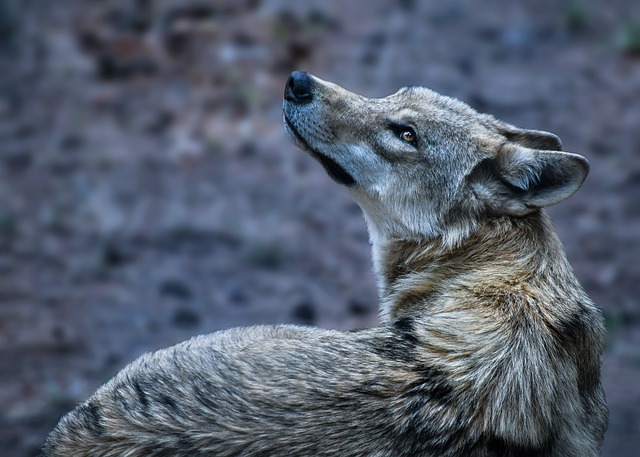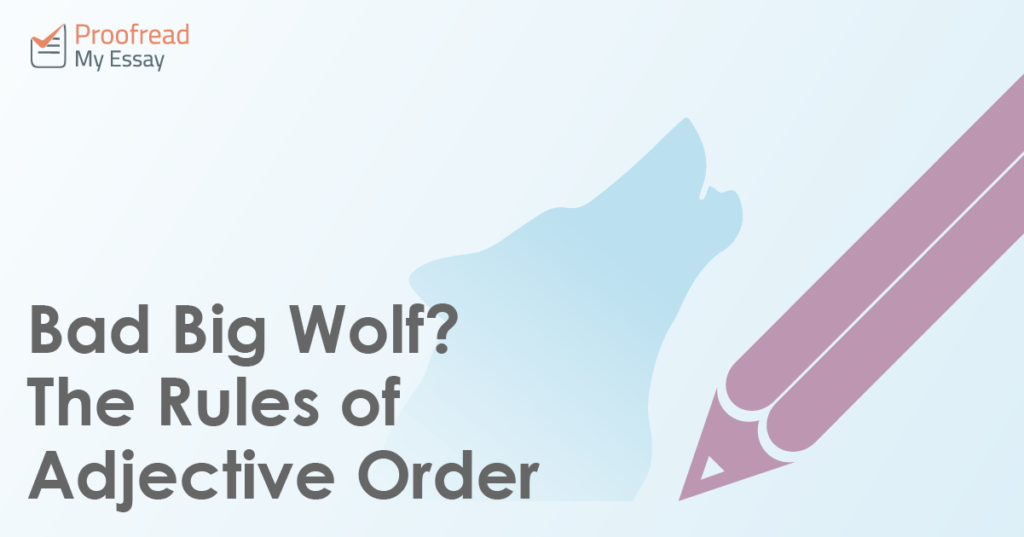The Big Bad Wolf is a rule breaker. And not just because of his penchant for harassing red-hooded girls and destroying porcine architecture. He also breaks the rules of adjective order.

But what is adjective order? And how does it work? Let us explain.
What Is Adjective Order?
Adjectives are words that modify nouns. If we use more than one adjective to modify the same noun, the rules of adjective order tell us how to arrange them. Even if you don’t know these rules yet, you can usually tell when adjectives are in the wrong order. Compare the following, for example:
Correct: Little Red Riding Hood
Incorrect: Red Riding Little Hood
In both of the above, the words ‘little’, ‘red’ and ‘riding’ modify hood. However, the first sounds natural because adjectives of size (‘little’) and colour (‘red’) usually come before adjectives of type (i.e. a ‘riding hood’). By changing this in the second example, it immediately sounds wrong.
Standard Adjective Order
The full list of adjective types and their standard grammatical order is as follows:
Find this useful?
Subscribe to our newsletter and get writing tips from our editors straight to your inbox.
- Quantity (e.g. one, many)
- Value/Opinion (e.g. wonderful, awful)
- Size (e.g. little, broad)
- Physical Quality (e.g. oval, rough)
- Age (e.g. new, six-year-old)
- Colour (e.g. red, bright)
- Origin/Nationality (e.g. English, Chinese)
- Material (e.g. wool, metal)
- Type/Purpose (e.g. riding, running)
Basically, the more essential an adjective is to the thing you’re describing, the closer it goes to the noun. This is why ‘riding’ (the type of hood) goes closer to the noun than ‘little’ and ‘red’ (its size and colour, which are less important).

This can even apply in cases that seem to break the rules. For example, ‘black’ is a colour term, so it would usually come before a place of origin. However, in ‘Asian black bear’, ‘black bear’ is actually a type of bear, so this still uses the standard adjective order.
Repeated Sounds and the Big Bad Wolf
As you may have noticed, ‘Big Bad Wolf’ doesn’t fit the standard order above. ‘Big’ is a size adjective, after all, so it should come before ‘bad’ (an evaluation/opinion). You could argue that this is because ‘bad’ is more important to the wolf’s character. But there is something else going on here.
When part of a word is repeated, we tend to favour a certain vowel order. And usually, ‘i’ comes before ‘a’ or ‘o’ in these cases (e.g. ‘zig zag’ or ‘hip hop’). We see this at play in ‘Big Bad Wolf’, where the vowel order rule is more important for it to sound natural than the adjective order.
It can be tricky to hear whether something sounds ‘wrong’ if English is not your first language, though. So if you’re not sure you have it right, consider asking a friend or having your work proofread.



